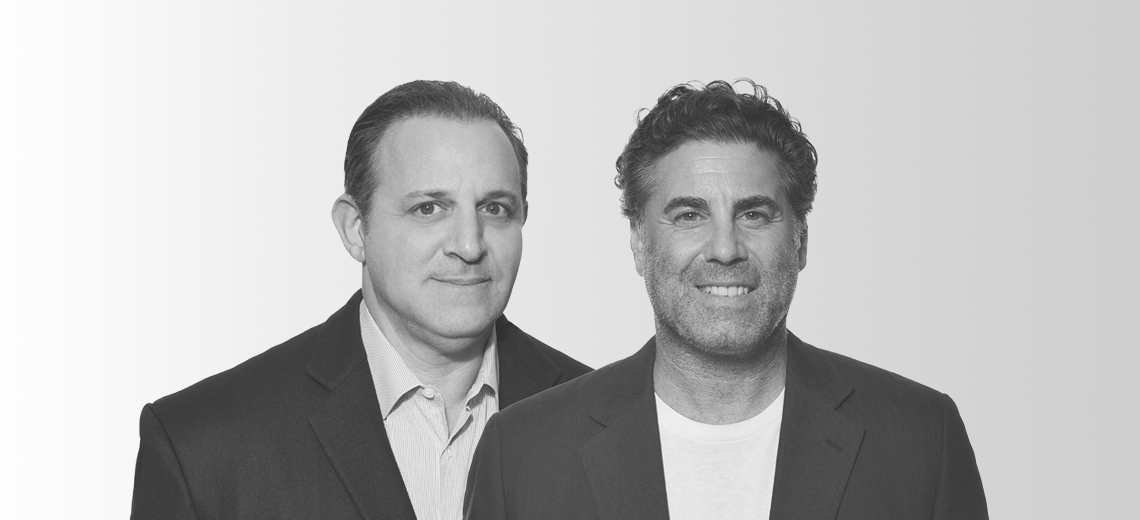This is an episode of the Glossy Fashion Podcast, which features candid conversations about how today’s trends are shaping the future of the fashion industry. More from the series →
Subscribe: Apple Podcasts • Spotify
Seth Weisser and Gerard Maione co-founded the luxury resale company What Goes Around Comes Around 31 years ago, starting with a single storefront in NYC’s SoHo neighborhood. In the decades since, they’ve built up a strong B2B business, with distribution partners from Dillard’s to Disney. Plus, they’ve teamed up with Amazon on e-commerce and opened two more stores, including a Beverly Hills shop and a second NYC location.
In the last few years, resale has been on a hot streak, which some would consider a threat to the brands selling luxury goods on the primary market. Indeed, tensions are often high — What Goes Around Comes Around was caught up in a legal battle with Chanel just last month.
On this week’s Glossy Podcast, Weisser and Maione discuss how luxury brands’ extreme exclusivity is impacting their business. They also talk about the success they’ve seen with livestream shopping since opening a dedicated studio last year and the ways they’re ensuring WGACA stands out as new competitors flood the resale category. Highlights from the conversation, below, have been lightly edited for clarity.
Making luxury accessible
Weisser: “Customers want what they want. So when the brands, with their exclusivity and their interesting practices, make it harder for the consumer to get exactly what they want when they want it, the consumer is then looking for choices. And if you can’t buy from the brand, you’ll have to buy things from the secondary market. That’s [led] to people entering the premium funnel and entering the vintage funnel. … Also, a lot of these products are discontinued and they aren’t even available anymore from the brands. So there are two ways [business] is trickling down to us.”
Maione: “Also, many people look to the secondary market for accessibility and options. And with all the brands [holding things] so close to the chest, it will only be a better scenario for us.”
Tackling the livestream shopping opportunity
Weisser: “We’ve always tried to keep an eye on where cycles are changing, regarding consumer patterns. And I think that’s why we’ve lasted 30 years — we’ve been willing to go where the consumer and the trends are going. … What we learned … was that the consumer was always transacting in our stores [versus e-commerce] because they wanted that education. They wanted that real-time experience to talk about why they should buy this versus that, and about the history and the provenance of the pieces. And we’d been seeing how, particularly in the Asian region, live selling was becoming a more active vehicle for every type of commerce. So when we were considering whether to take the new [store] space on Wooster, we knew it was a huge opportunity for us to consider opening a studio and invest in the live-selling future. … And now we’re a little under a year in, after starting to broadcast. We’ve started an enterprise partnership with TikTok, we’re doing exclusive shows on Amazon through our Amazon partnership, we have shows on Instagram, and we’re starting to bring different hosts and personalities on to talk about their vintage experience. … The live studio, which is called WGACA Live, is part of the next evolution for us.”
Differentiating in a crowded category
Weisser: “Our biggest challenge is always continuing to make sure that people understand what we do and why we’re different from everyone else in resale. And that’s always a challenge because there are people who just don’t have the history and experience to know about what we are, what we do and why we are a better choice, in terms of where to buy your pre-owned luxury — that’s because of the quality, integrity and standards that we maintain. Often, people don’t know the difference between several Chanel bags that may look the same. And I always try to use the car analogy of a used car: The one with 10,000 miles is gonna be much more expensive than the one with 30,000-40,000 miles. The same thing applies to vintage or bags or luxury, because the condition of this product falls into the definition of collectability. Sometimes that doesn’t come across as directly as we want. Businesses in our sector — because a lot of these have been funded by private equity or venture capital groups that may not have a direct path to profitability — in a way, disrespect these pieces that deserve the respect that we acknowledge they do. We’re always trying to make sure that’s part of our message about why What Goes Around is the safest and best place to buy your pre-owned luxury.”




